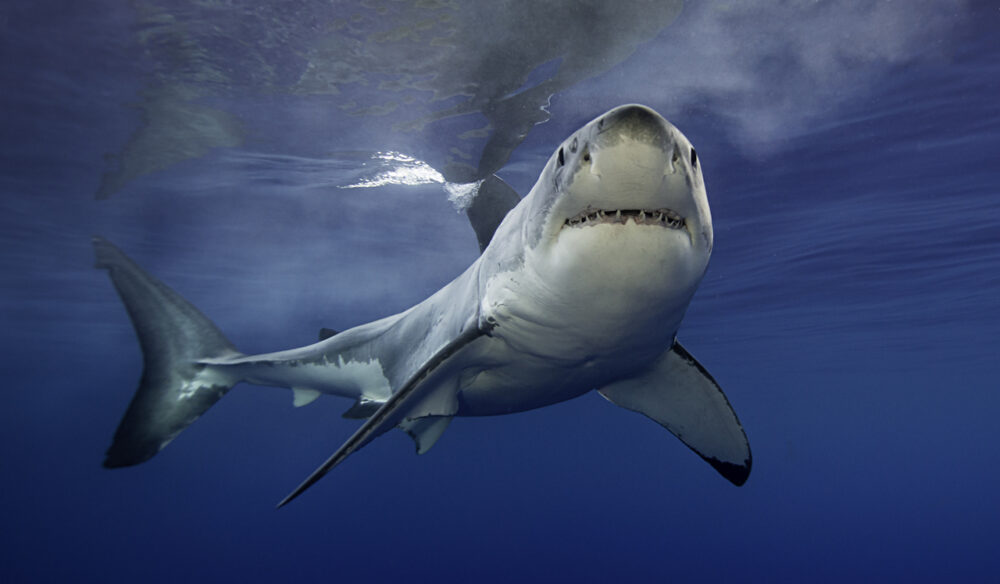Shark Attack! Killers among us?
We all know them, the lurid articles in the tabloids after a shark attack in our diving waters.
For many tourists, sharks are basically the bloodthirsty killers that make our bathing beaches unsafe. Is that really the case?
More understanding for our environment
As is so often the case when nature and man meet, it is up to man, equipped with sufficient knowledge, to possibly avoid accidents and disasters. Scuba Schools International (SSI) dedicates its own education programme to our marine environment, the “Environment Specialty Programme”. Among them is the entertaining and informative programme “Shark Ecology”, which we highly recommend to anyone interested: Click here for the training.
Insights into the world of sharks
Sharks are fascinating and important animals for the marine ecosystem. Yet time and again there are tragic shark attacks on humans, as most recently in Hurghada, where a 23-year-old man and two women a year earlier were killed by a tiger shark. How can such attacks be avoided or explained? And how can we protect the sharks, which are themselves threatened by overfishing and pollution?
In this blog post, we want to shed some light on the facts and background of sharks and their relationship with humans. In doing so, we rely on scientific findings and expert opinions that we have researched from various sources.
How common are shark attacks on humans?
Shark attacks on humans are very rare. According to the International Shark Attack File database, there were 57 shark attacks worldwide in 2022, of which only five were fatal. This is the lowest number in ten years. The probability of becoming a victim of a shark attack is almost as small as winning the lottery.
Most shark species are completely harmless to humans, as they mainly feed on plankton or smaller fish. Harmless filter feeders include, for example, the whale shark, the basking shark and the basking shark. Many smaller shark species such as the dwarf shark or the thresher shark also pose no threat.
Only a few shark species can become dangerous to humans if they feel threatened or mistake them for their natural prey. These include mainly the great white shark, the tiger shark and the bull shark, which can also occur near the coast.
Why do sharks attack humans?
The exact reasons for shark attacks on humans are not fully understood. A common hypothesis is that it is a case of mistaken identity, but this has not been scientifically proven. For example, sharks might mistake surfers for seals or swimmers for fish.
Another hypothesis is that sharks only want to test people to find out whether they are edible or not. These are so-called test bites, in which little tissue is removed. In most cases, sharks then let go of their victims because they don’t like them or because they realise that they are not easy prey.
So sharks have no intention of eating humans. They are rather curious or react instinctively to stimuli in their environment. They are also not bloodthirsty monsters, as they are often portrayed in films or the media.
How to avoid shark attacks?
There are some tips and rules of conduct that can minimise the risk of a shark attack. These include for example:
- Do not swim or dive in murky water or at dusk.
- Do not swim or dive in areas where there are many fish or seals
- Do not swim or dive alone
- Do not go into the water wearing jewellery or brightly coloured clothes
- Do not go into the water if you are bleeding or have wounds
- Do not urinate in the water
- Do not try to touch or feed a shark
- Do not panic if you see a shark
- Be calm and confident when facing the shark
- Retreat slowly and leave the water
- In an emergency, try to strike the shark in sensitive areas such as the eyes, gills or snout
How can you protect sharks?
Sharks are much more threatened by humans than vice versa. Due to overfishing, bycatch, poaching, climate change and pollution, many shark species are threatened with extinction. This has negative consequences for the entire marine ecosystem, as sharks play an important role in balancing the food chain.
Various measures are needed to protect sharks. These include, for example:
- The establishment of and compliance with protected areas for sharks
- The reduction and regulation of fishing and trade in shark products.
- To raise awareness and educate the public about the importance and beauty of sharks.
- Promote and support scientific research on sharks.
- Develop and use non-lethal methods to prevent shark attacks.
Conclusion
Sharks are fascinating and important animals for the marine ecosystem. But they are also misunderstood and endangered animals that deserve our respect and protection. Shark attacks on humans are very rare and can often be avoided. We should therefore not be afraid of sharks, but appreciate and preserve them as part of our nature.
Get started now on a deeper understanding of the life (and death) of sharks in our oceans. Sign up for the SSI Shark Ecology Specialty: Shark Ecology Specialty
The SSI Shark Ecology course teaches you how to interpret shark behaviour, why they are often misunderstood and how to dive safely with them in an entertaining and easy to understand way. It’s the perfect course for shark enthusiasts, but also for divers who have a fear of sharks and want to finally overcome it.
After completing the programme you will receive SSI Shark Ecology Specialty certification.
You can complete the course entirely from home. You do not need to be at the dive centre at any time. Once you have completed the online course, we will issue a certification for you.



